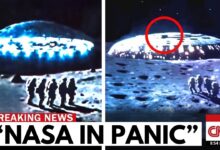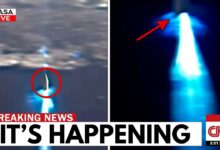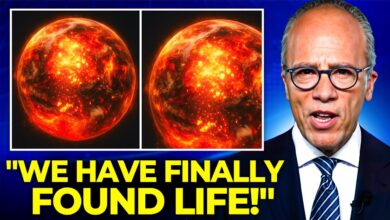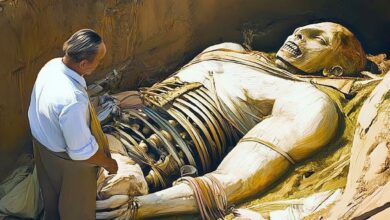James Webb Telescope CONFIRMS Betelgeuse is NOT What We’re Being Told
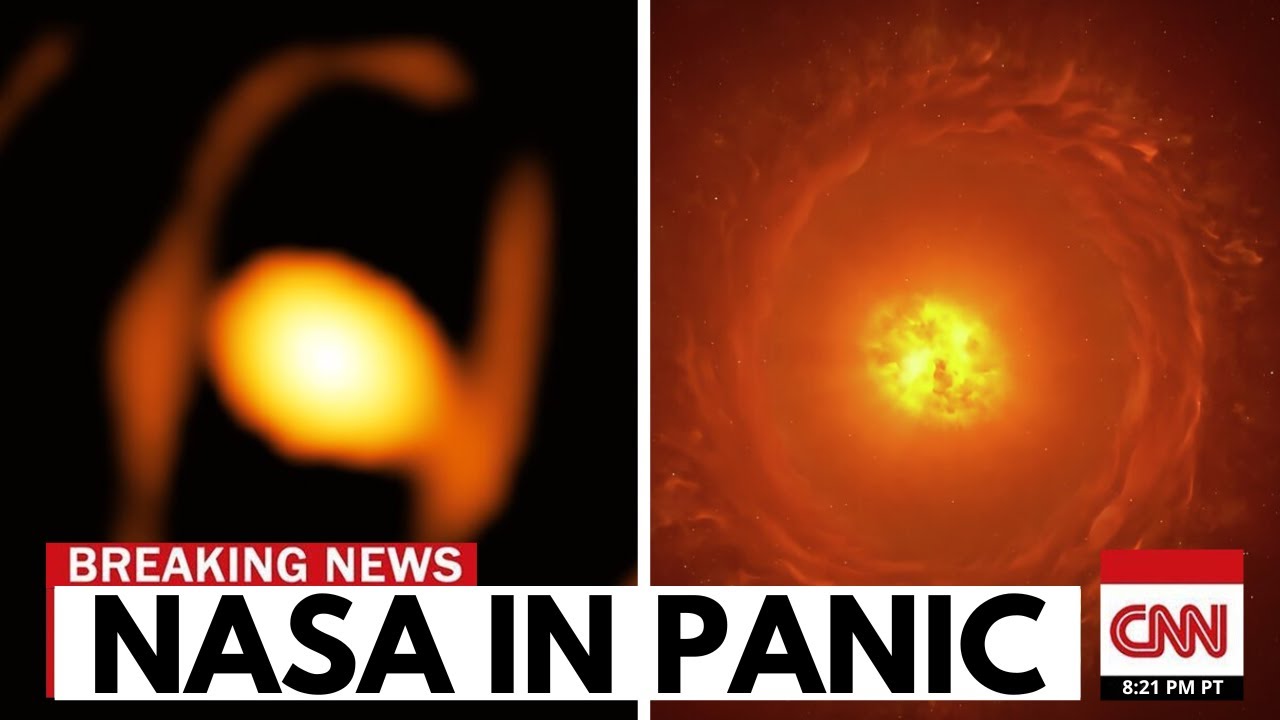
For years, astronomers have kept their eyes on one of the brightest and most enigmatic stars in the night sky: Betelgeuse, a red supergiant teetering on the edge of death. They knew it was coming—they just didn’t know when. And now, the James Webb Space Telescope has captured what no one was sure we’d ever witness: the moment Betelgeuse began to explode. A stellar death. A cosmic shockwave. A window into the raw, untamed power of the universe.
This isn’t just another deep space observation. This is a once-in-a-lifetime event—the closest supernova humanity has ever recorded. And what Webb saw? It changed everything.
Perched on the shoulder of the Orion constellation, Betelgeuse is no ordinary star. It’s more than 700 times the size of our Sun and roughly 20 times as massive. For decades, scientists have known it was unstable—swelling, dimming, erupting. In 2019, it suddenly faded, triggering global speculation. Was this the end? Was it finally going supernova?
Now, thanks to Webb’s precision instruments, the mystery has only deepened. For the first time, we’re witnessing real-time indicators of a star in collapse—massive energy discharges, chaotic surface convection, magnetic fields twisting into madness. Betelgeuse isn’t just dying—it’s transforming before our very eyes.
For months, Webb has trained its infrared gaze on Betelgeuse, piercing layers of matter no previous telescope could see. And now, the data has arrived.
What it reveals is staggering: convective bubbles the size of Jupiter erupting on the surface, plumes of hot gas streaming into space at incomprehensible speeds, and hidden within the light spectrum—a shockwave slicing through the star’s outer shell. For the first time, astronomers are watching the actual physics of a star tearing itself apart. Not a simulation. Not theory. Reality.
And it’s happening just 642 light-years from Earth.
Unlike supernovae in distant galaxies, Betelgeuse is close—cosmically speaking, very close. Its explosion may become so bright that it could outshine the full moon and be visible even during the day. But more importantly, its proximity offers scientists a once-in-a-generation chance to study a star’s death up close.
What happens as the core collapses? How are elements like carbon and oxygen created? How does the shockwave reshape surrounding space?
What Webb has captured isn’t just a star dying—it’s the birthplace of the very elements that make life possible. The same elements that built Earth. That built us. We’re watching our cosmic ancestry unfold in reverse.
The explosion of Betelgeuse is more than spectacle—it’s a key, unlocking the hidden processes of galaxy formation, planetary systems, and the cycle of life in the cosmos. With Webb’s advanced technology, we can now model the final stages of stellar evolution with unprecedented precision. We may even learn to predict future supernovae—long before they erupt.
This isn’t just science. It’s revelation. A moment when humanity gazed into the abyss of time—and the light exploded back.
The collapse of Betelgeuse isn’t silent. Shockwaves are already spreading, heating gas clouds, distorting its dusty halo. But most intriguing of all—a gravitational ripple. Even from 642 light-years away, Betelgeuse’s collapse may have unleashed gravitational waves—the kind we’ve only recently learned to detect. If confirmed, this would be the first time we’ve linked a visible supernova with direct gravitational wave data, rewriting everything we thought we knew about how light, matter, and spacetime interact.
And yet the greatest cosmic question remains: What will be left behind? A neutron star? A black hole? Or something stranger?
Webb’s data suggests the collapse may not be uniform. There are magnetic disruptions, plasma voids, and a strange fallback where matter doesn’t escape—but gets pulled back inward. Some astrophysicists now speculate we may be witnessing the formation of a new kind of object, something that lies between a neutron star and a black hole—theorized, but never seen.
This leads to a pressing question: Are we in danger? The short answer is no. Betelgeuse is far enough to be harmless to Earth. But the longer answer is more complex. The explosion will unleash high-energy particles, gamma radiation, and expanding electromagnetic bursts. These might not reach us—but they could influence nearby star systems and change how we observe the cosmos from Earth.
Betelgeuse is vast. Ancient. Powerful. And now—it’s dying. A reminder that even stars, those eternal lights in our sky, have limits. What Webb has captured isn’t just the death of a star—it’s a mirror held up to us.
Everything that lives must end. But in that end, new life begins. New stars will rise from the ashes of Betelgeuse. New worlds may take shape in the chaos it leaves behind.
This is not destruction. This is cosmic renewal.
Within Webb’s colossal stream of data, scientists found something unexpected: Betelgeuse is releasing not only carbon, oxygen, and iron—but rare elements like technetium and yttrium, forged only in the most extreme stellar environments. Why does this matter? Because these elemental ratios allow scientists to trace the life cycle of matter itself—from dying stars to planet-forming dust to the atoms inside you and me.
Webb isn’t just recording a cosmic death—it’s decoding the chemical script of how life becomes possible. And Betelgeuse, in its final act, is telling a story that began long before Earth even existed.
Betelgeuse will never shine again. Its place in Orion will become an expanding cloud of hot gas and glowing debris. But its death is not an end—it’s a gift. A gift of knowledge, of elements, of perspective. A reminder that one day, our own Sun too will fade. That even the most brilliant lights in the sky have a final chapter.
And yet from this end comes the blueprint for something new. Without supernovae, there are no planets, no oceans, no life. And now, thanks to James Webb, we can finally witness that full cycle—from fiery collapse to the raw materials of creation.
In the cold silence of space, 642 light-years from Earth, a star has died. Not with a whisper, but with a final, blazing roar that traveled through darkness for centuries—until it reached us. Thanks to the James Webb Space Telescope, we didn’t just see it—we understood it.
We saw the signs, the collapse, the detonation—not as myth, not as metaphor, but as fact.
Betelgeuse didn’t die in vain. In its final moment, it gave us answers to questions older than humanity itself: Where do the elements come from? How do stars live and die? And what will become of our own Sun?
In that fading red glow, Webb has captured more than a supernova. It has captured our origin story—and a glimpse of our future.
So now, we ask: What else does the universe still have to reveal? And are we truly ready to witness it?
Let us know your thoughts in the comments. Was this the most important stellar event of our time? And what will be the next great cosmic secret the James Webb Space Telescope uncovers?
Subscribe and turn on notifications—because this isn’t the end.
It’s only the beginning.


